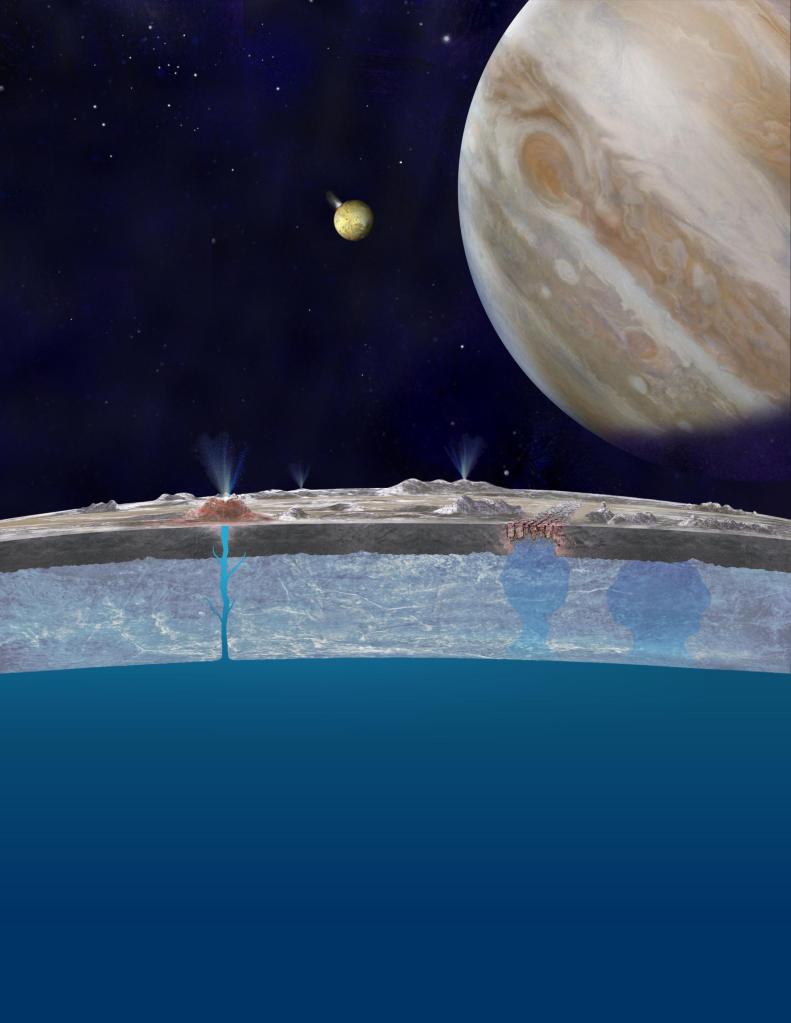Water is the foundation of all life on Earth, which is why scientists are always on the lookout for ocean worlds that might have sprouted their own alien creatures. In our solar neighborhood, Jupiter’s moon Europa and Saturn’s moon Enceladus stand out as particularly promising candidates, as both show evidence of subsurface water.
While the Cassini orbiter (RIP) actually flew through watery plumes erupting from cracks in Enceladus’ icy surface, similar sprays on Europa have long been suspected, but have never been directly sampled.
Videos by VICE
Or have they? Research published Monday in Nature Astronomy reveals that data acquired by NASA’s Galileo spacecraft (also RIP), which explored Jupiter from 1995 to 2003, includes evidence that the probe swept through a plume in 1997.
Led by Xianzhe Jia, a planetary scientist at the University of Michigan in Ann Arbor, the study finds that the onboard magnetometer and plasma wave spectrometer picked up readings that suggest Galileo skinny-dipped through a Europan geyser.
Jia was already familiar with Galileo’s observations, having worked with them extensively while pursuing his PhD at UC Los Angeles. So when the Hubble Space Telescope began searching for plumes around Europa, turning up some promising imagery from the moon’s equator, he revisited data acquired by Galileo’s close flyby some 206 kilometers (128 miles) above Europa’s equatorial crust.
Sure enough, the magnetometer picked up “perturbations expected if the spacecraft crossed a plume rising above the nearby surface,” according to the study. The plasma instrument corroborated the unusual measurements, which were probably produced by liquid water becoming ionized into hydrogen and oxygen atoms.
Read More: We Have Strong Evidence Saturn’s Moon Enceladus Can Support Microbial Alien Life
Jia and his colleagues modeled the impact a plume would have had on Galileo’s instruments and reached a similar scenario. “These results provide strong independent evidence of the presence of plumes at Europa,” the team concluded.
While the original Galileo team noted the flyby’s weird observations at the time, they didn’t have enough background information to interpret it as a plume—which is actually a testament to how much planetary science has advanced in only 20 years.
Even the Cassini spacecraft, which launched nearly a decade after Galileo, was not designed to look for alien geysers. But given that Cassini did end up imaging and sampling Enceladus’ plumes, scientists have more open to looking for evidence that these spouts exist on other watery worlds like Europa.
Fortunately, Jia is a co-investigator for some of the proposed instruments on the ESA/NASA Jupiter Icy Moon Explorer (JUICE) mission, scheduled for launch in 2022, as well as NASA Europa Multiple Flyby Mission, slated for liftoff in the mid-2020s, so he will have a front-row seat to new observations of the moon, and its mysterious subsurface ocean.
Get six of our favorite Motherboard stories every day by signing up for our newsletter.




